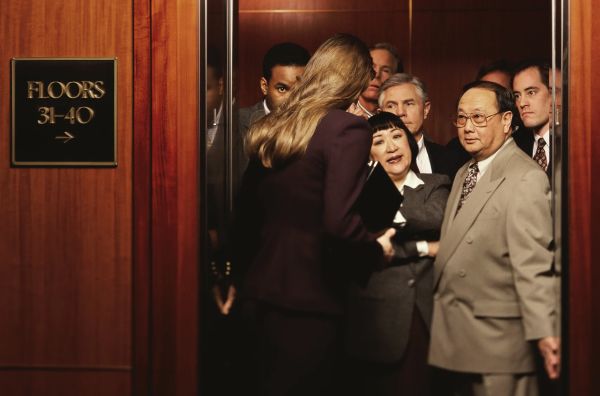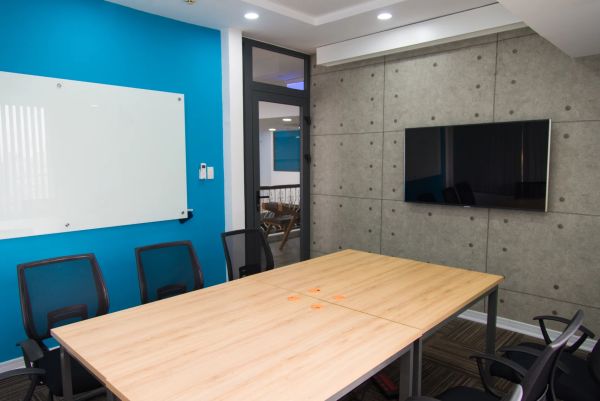I’m sure we can all agree the last couple of months have felt like a whirlwind for those of us working from home trying to maintain a somewhat normal level of productivity during COVID-19. We’ve grown accustomed to rolling out of bed in our sweats and making the “commute” to our home offices, living rooms or kitchens to sit down and try to have a normal workday with all of our family members running around the house.
Now that some states are gearing up to open their places of business and get back to a certain degree of regularity, there are some aspects of the office that will be forever changed in an effort to maintain everyone’s well-being. Check out seven things you won’t see anymore upon returning to the office:
1. Handshaking
What was once a sign of courtesy and respect has somehow become our downfall. Handshaking in the office usually takes place when a client is visiting or when you greet someone for a job interview. In fact, a firm handshake and simultaneous eye contact used to be indicators of confidence and professionalism upon meeting a potential employee. Not anymore. Going forward, recruiters will have to find a new way to gauge someone’s level of aspiration for a new position upon greeting.
“I don’t think we should ever shake hands ever again, to be honest with you,” said Dr. Anthony Fauci, the director of the National Institute of Allergy and Infectious Diseases, as quoted by The Wall Street Journal. “Not only would it be good to prevent coronavirus disease, it probably would decrease instances of influenza dramatically in this country.”

2. Packed elevators
Gone are the days when we will be packed like sardines in a little lift bucket. From now on, three people or fewer will be allowed in an elevator at a time, depending on the size of it, to accommodate social distancing. You will also see changes to the line, as indicator markers on the floor will mitigate the crowding that takes place outside the elevator doors where people anticipate piling themselves in. This will definitely affect your commute times to and from work every day, as this will take much longer than before, so either plan your time accordingly, or if your office isn’t that many floors up, just take the stairs.

3. Sharing items in common areas
I’m sure many of us never really considered how inundated with germs our office breakrooms were. Just think about everything we touched and shared on a daily basis: microwaves, coffee mugs, milk containers, bowls, cereal boxes, packages of bread, condiments, seasoning–anything that is left out on the counter to share is a breeding ground for contamination. Going forward, you can expect many more disposable, single-use, biodegradable food supplies. For those businesses that may find these solutions too expensive, we may see communal spaces be eliminated altogether. So plan to make some coffee at home and pack a lunch!

4. Open floor plan
Many office spaces have adopted a more friendly, open layout when it comes to workstations. Some companies have rows of tables with employees seated only a few feet apart with their individual monitors and keyboards, able to look directly at each other for easier communication. This will certainly change, as businesses will still adhere to the mandate of six-feet social distancing. Prepare to see some glass partitions or barriers, or even your own cubicle, in an effort to decrease direct contact with your coworkers. Even if this is the case, it’s still highly recommended to wear masks around the office to decrease the chance of spreading water droplets and germs when coughing or sneezing.

5. Vending machines
Unless your employer plans to distribute rubber gloves and mandate that everyone uses hand sanitizer before and after vending machine usage, you can probably kiss these devices goodbye. The keypads on vending machines, as well as stagnant bottled water coolers hold a lot of bacteria, increasing the inevitable spread of germs. It’s sad to say, but it looks as if the many job perks we’ve all grown accustomed to enjoy will be going away for the time being, if not for good. Again, just prepare to bring your own snacks and bottled water to the office, because it looks like we’ll be on our own.

6. Cramped conference rooms
Remember how cozy it would feel to pack six or seven people around a tiny table in a conference room while we all stared at a presentation on a screen, practically rubbing elbows? Those days are over, as it’s impossible to keep a safe distance in such a confined space. The solution may be to still utilize video conferencing at our individual desks with WebEx or Zoom, or if your company is lucky enough to have a large conference room, it may still be possible to let in a few people at a time while maintaining a safe distance from one another. Another thing you may see disappear is the whiteboard markers we all share unless we remember to either wear gloves or clean them with disinfectant wipes after every usage. Looks like digital note taking will be the only acceptable solution from now on.

7. Overly scheduled meetings
Do you ever look at your calendar first thing in the morning and think, “Wow, I have a lot of meetings today”? That scenario may change as well. Companies are looking to hold fewer meetings while putting more effort into making them more efficient and organized to diminish the amount of social gatherings in the office. Many lessons taken from how we’ve had to conduct video conferencing calls within the last two months could leave a lasting impression on how we structure meetings going forward. As mentioned above, virtual conferencing may still be perpetuated even in the office. Also, as we start the transition to go back to work, many businesses are having their employees return in small groups, so some coworkers may not even be available for an internal meeting just yet.

Bonus
I know I said I would mention seven things, but another change you might see around the office is fewer people, as some businesses are finding during this time that their employees are able to function just fine from their homes and are still getting their jobs done. Thinking ahead, this will create a more cost-effective solution for companies to operate an office building with a more streamlined staff, or not even have a building at all.
“More people will absolutely be working from home from this day forward,” said Cara Silletto, Crescendo Strategies’ president and chief retention officer. “The biggest hurdle most companies faced were technology barriers, which we’ve overcome, and mindset barriers of old-school leaders believing that people must be on site to be productive. Regarding the latter, we will see some go back to their default and be happy to be back in an office together again, but we’ll also see the other end of the spectrum where leaders will wonder why they’re paying so much rent for office space and devise an effective remote working plan.”
Do you feel ready to return to the office amid COVID-19? Let’s all remember to still be mindful and safe out there as we make our way back to normalcy, or at least the best version we could reproduce of it.


